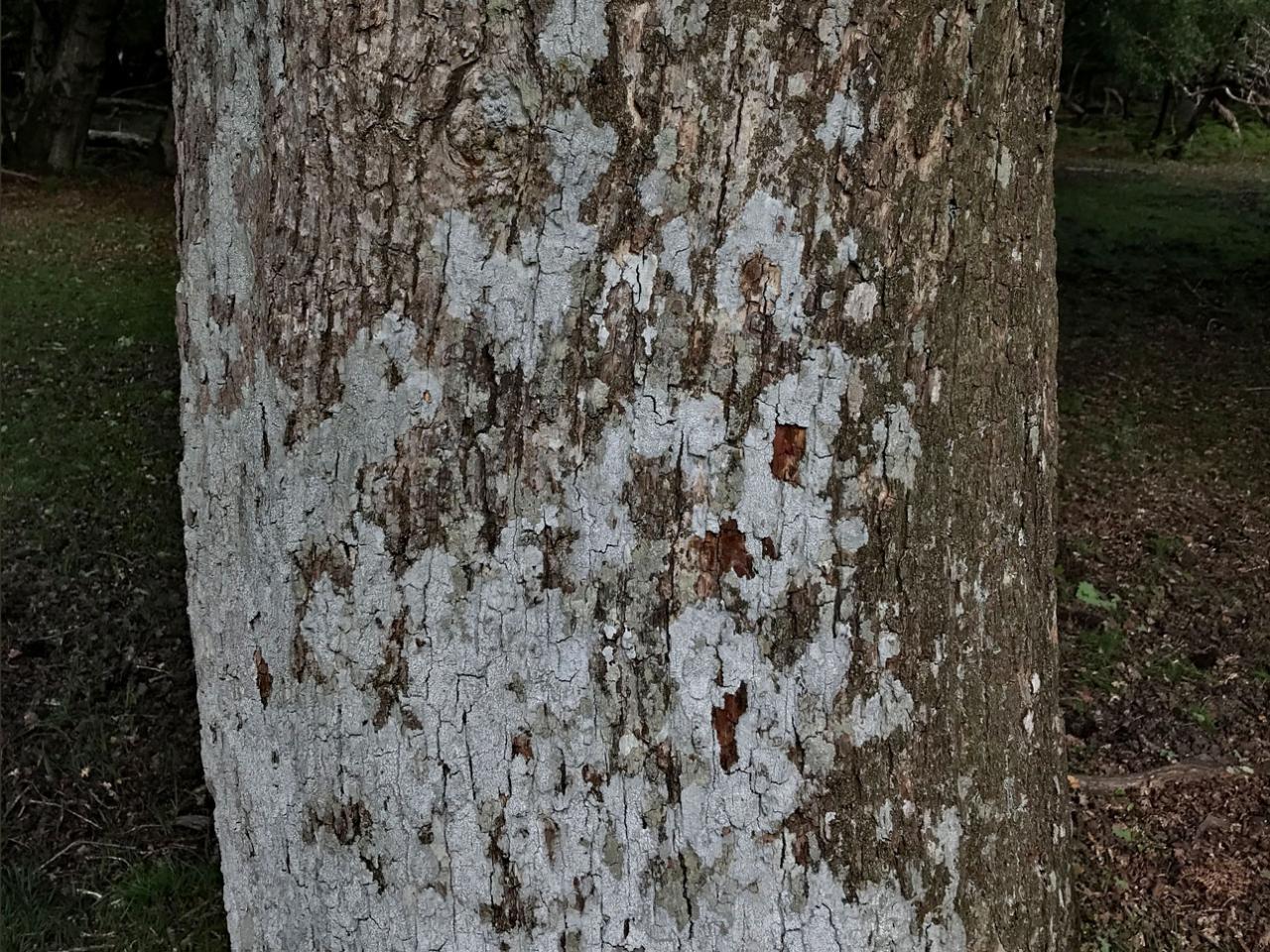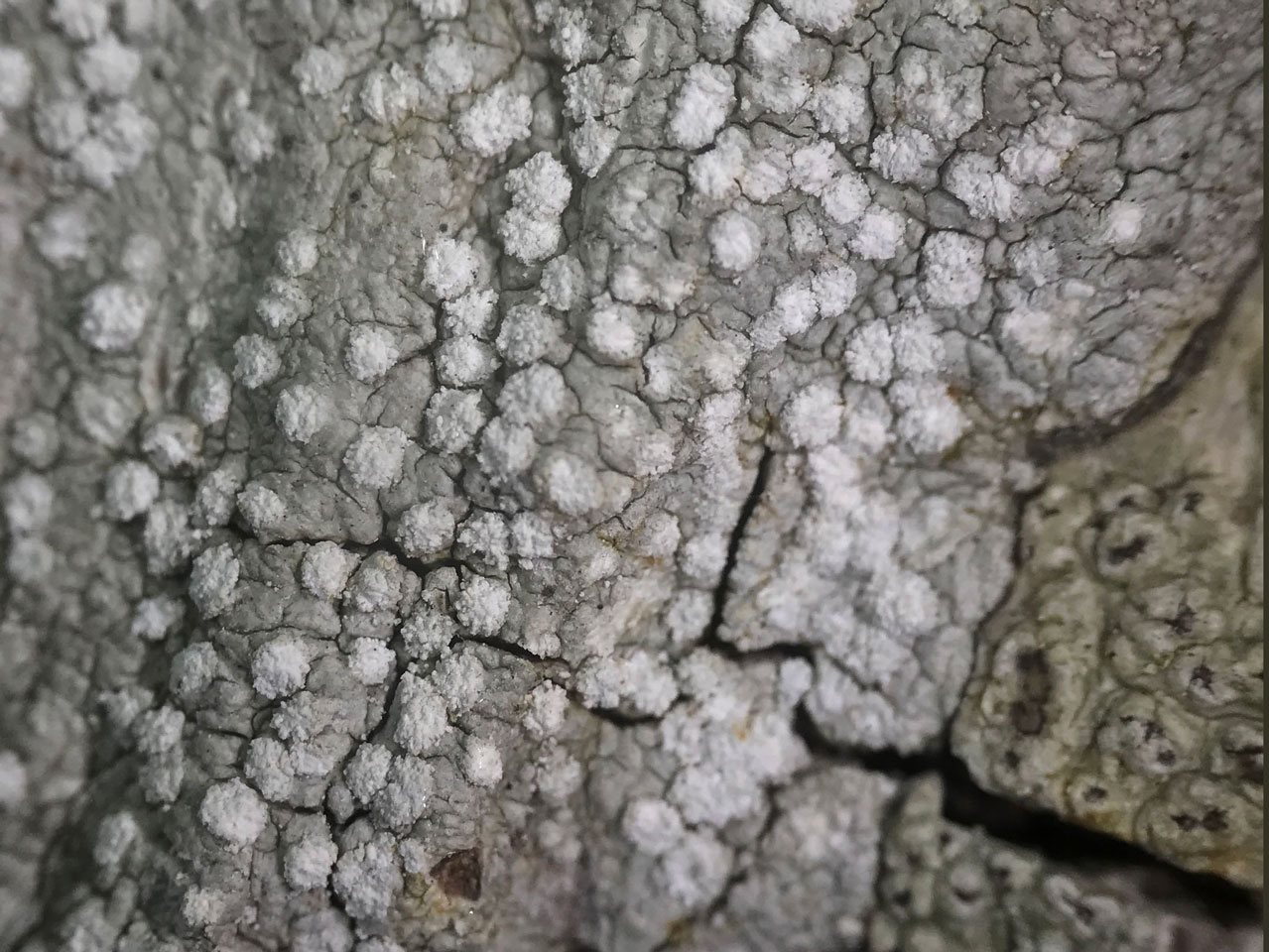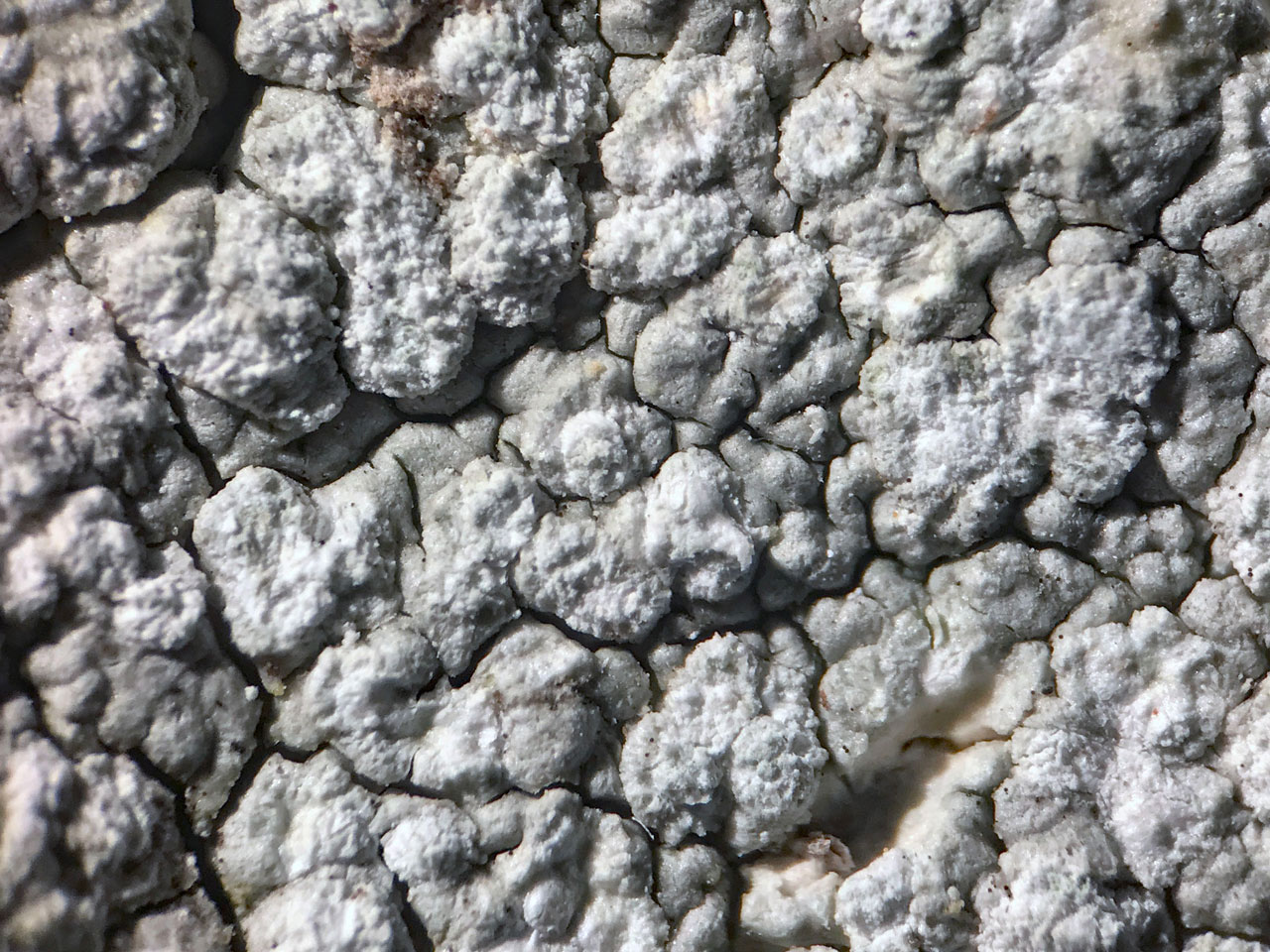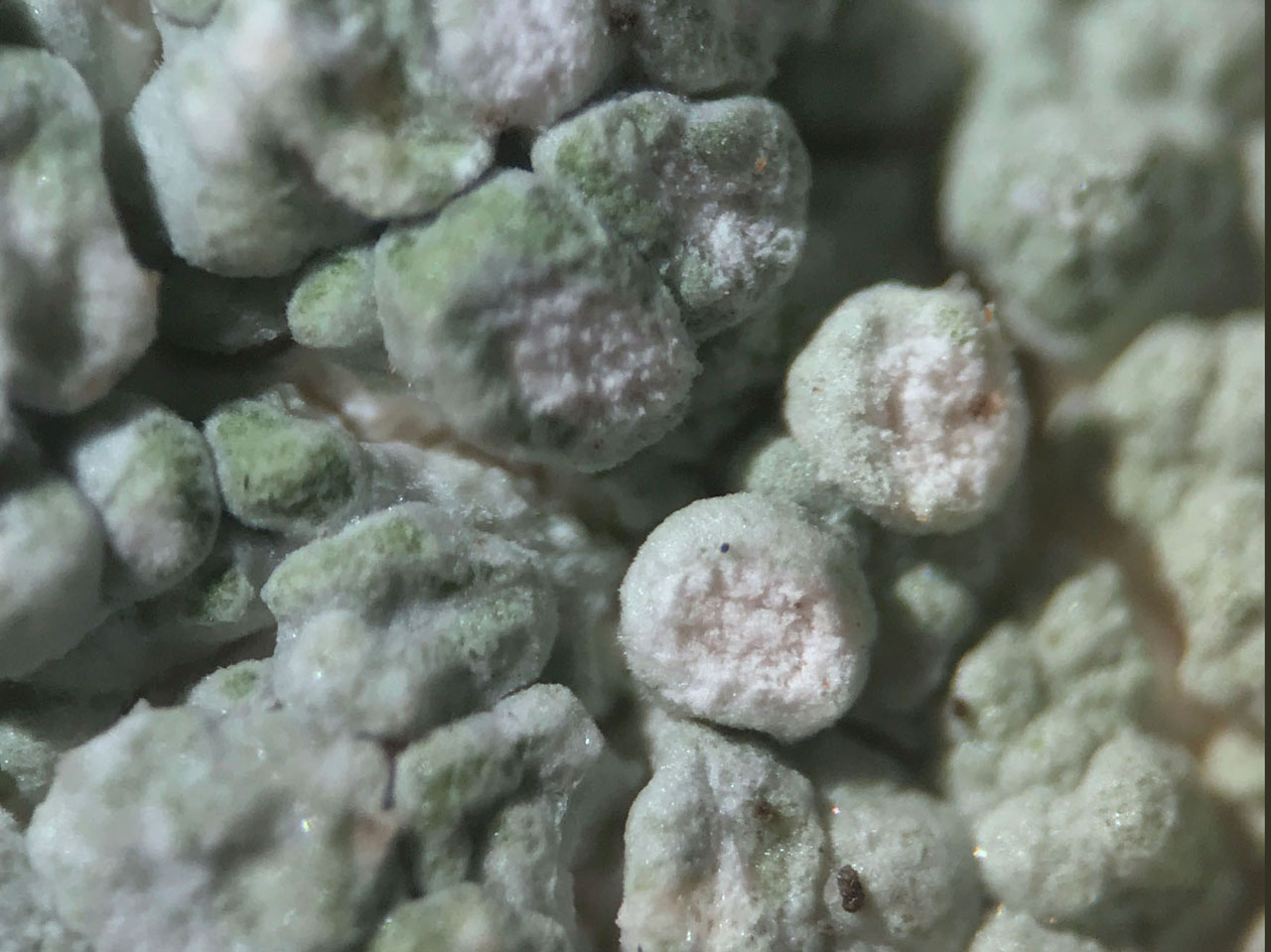This lichen typically forms extensive crusts on well lit veteran trees on mesic bark in old growth woodlands and deer parks, but it has also been reported from rock. Consists of a grey warted thallus densely and regularly set with sorediate warts, which are usually sterile. The warts can occasionally have developing apothecia within them with asci, but these have not been reported with spores. Superficially looks very similar to Lepra multipuncta, and probably overlooked as this in the past, but that lichen has a different chemistry, is always fertile and has subtle differences in morphology and colour contrasts between the thallus and the soralia.
Like Lepra amara, but the thallus forms ± compact cushions; upper surface warted-papillate, the apices and ridges breaking down into small, elevated, punctiform soralia, never forming discrete round soralia. Rarely immature apothecia occur within the warts, with asci but lacking spores, but these lack the crenate margins of L. ophthalmiza which may have similar chemical reactions. Soralia and medulla C–, K– (K+ reddish brown after a few hours), KC+ violet, Pd–, UV– (picrolichenic acid).
Pertusaria polythecia morphologically resembles this variety but is KC– and not bitter in taste. Material on trees has been widely overlooked as Lepra multipuncta, which it strongly resembles, but that is K+ chestnut brown and KC–. Lepra multipuncta is also nearly always fertile, the soralia are set more thinnly and irregularly on the thallus and the contrast between the paler grey thallus thallus and the white soralia is less strong. L. pulvinata, however, is rarely confused with L. amara, although some forms of L. amara with more densely set soralia, may be mistaken for L. pulvinata. The latter, however, have a smoother thallus and less discrete soralia.
On sheltered but well lit mesic bark on veteran trees in old growth woodlands and deer parks or rarely mossy rocks.

Infrequent, S.W. England (frequent in the New Forest), Isles of Scilly, Wales, W. Scotland, W. Ireland (Cork, Galway). Likely to be overlooked in other sites.
Not evaluated. Frequent in the New Forest, but rather rare beyond and confined to high quality old growth habitat. Potentially Near Threatened.
Britain: Notable
Cannon, P., Kukwa, M., Coppins, B., Fletcher, A., Sanderson, N. & Simkin, J. (2021). Pertusariales: Ochrolechiaceae, including the genera Lepra, Ochrolechia and Varicellaria. Revisions of British and Irish Lichens 5: 1-17. Link
Text by Neil A Sanderson based on Cannon et al (2021)





